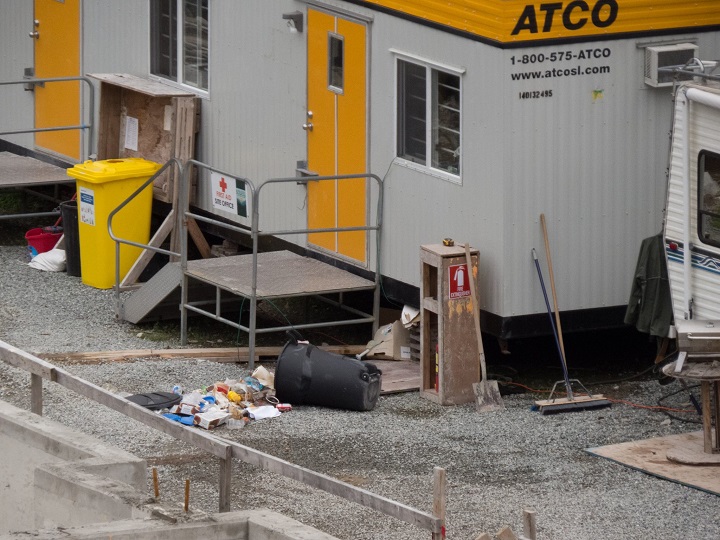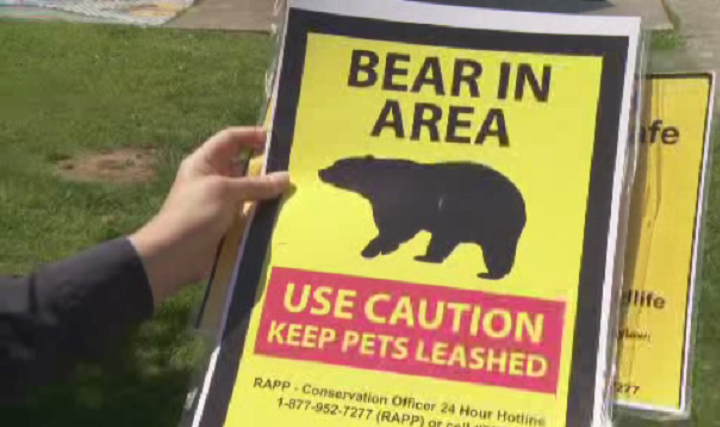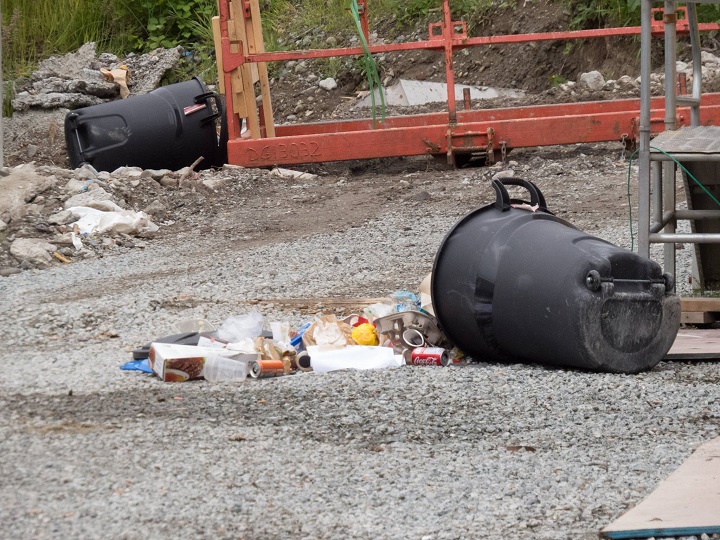Some Squamish residents are upset after three bears were destroyed by conservation officers on Sunday.

A sow and her two cubs were put down due to their “high level of habituation and some of their behaviours,” Conservation Officer Dean Miller said.
Even though the bears were destroyed after breaking through the fence of a construction site and going through their garbage, it wasn’t a one-off situation.
“Usually there are a lot of factors that lead up to [bears being destroyed],” Wildsafe BC Community Coordinator Vanessa Isnardy told Global News.
“We back right on the estuary, which is prime bear territory… they come in and out. There’s a lot of travel spaces and corridors for the bears and we want to discourage them from staying. Moving through is fine but having access to food and getting a caloric reward… that leads to returns and conflict behaviour as they keep getting those rewards.”
That’s what happened with the sow. The trio was frequenting busy neighbourhoods in Squamish and she was teaching her cubs how to forage in garbage cans.
Isnardy’s main job is to educate and work with the community on removing attractants to keep them bear safe but she says it’s hard to get the message out to everybody and in addition to that challenge, bears like so many things. Along with organics and garbage, bears like fruit, bird feeders, oil and grease.
“We try to work to remove the attractant… and we can try to relocate them but they end up coming back. It’s usually just a temporary fix and you need to deal with the attractants.”

Get breaking National news
WATCH MORE: Bear takes a stroll through Burnaby neighbourhood
Miller said they had numerous reports of the sow and her cubs activity in Squamish. After a dog was attacked in their backyard by the sow, conservation officers moved the family out of town to Alice Lake.
“They were tranquilized and tagged. We did a short distance relocation and they ended up returning and exhibiting the same behaviours,” Miller said.
At that point, conservation officers knew if they tried to relocate the bears again, they’d come back.
“Bears have long memories,” Miller explained.
“It’s one of the most challenging parts of dealing with bears and they learn a behaviour and they keep replicating it. That’s their survival instincts. Unfortunately, they are as smart and resourceful but it gets them habituated very quickly and gets them into trouble.”
READ MORE: Jail break: Four out of five bears returned after escaping Langley wildlife facility
Still, some Squamish residents are questioning if those deaths could have been prevented.
“The main thing is around garbage… the rules are that you are not to have any open containers that are accessible to bears, you need to have a locked bear proof bin or you need to make sure that your garbage is stowed in a safe place until collection day and then you’re allowed to put it out at 5 a.m.”
Miller agrees that garbage is part of the bear problem.
“You can have a neighbourhood where one house out of 20 will have attractants and it will cause bear problems for the whole area,” he explained.
It’s believed there are at least 25 active bears in the Squamish area and since May 2016 there have been four “contacts” between bear and humans.
He says when it comes to holding residents accountable for not being bear smart the province is “looking at this very seriously.”
“In recent years we’ve increased the fine amounts that we can charge residents or businesses that have available attractants to bears — and the fines are very steep. If it’s serious enough we can take them to court and get a court imposed fine,” Miller said.
Currently it is too early to know if any fines will result in this incident.
The investigation into all the factors that led to these three bears being destroyed is continuing.
~ with files from Jill Bennett














Comments